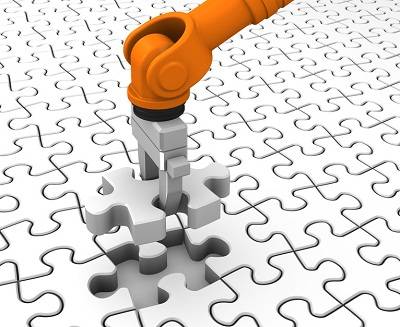Heart of Texas Network Consultants Blog
The Internet of Things as the Next Big Thing
 When you hear the phrase, "The machines are taking over," you may think of science fiction stories where robots become self-aware and enslave humanity. You may not have realized it, but the machines have already taken over; not with a violent uprising, but through what's called the Internet of Things (IoT).
When you hear the phrase, "The machines are taking over," you may think of science fiction stories where robots become self-aware and enslave humanity. You may not have realized it, but the machines have already taken over; not with a violent uprising, but through what's called the Internet of Things (IoT).
You are familiar with how the Internet is great at connecting people. Although technically, the Internet does not connect flesh and blood humans; instead, it connects human-operated computers using different IP addresses, providing people with a virtual connection. The Internet of Things is exactly as it sounds, the human operators are removed and what's left is a network of Machine to Machine (M2M) communication.
Thanks to the advancements in microprocessors and more kinds of computing devices becoming connected (especially mobile), we are seeing the next phase of the Internet populated with traffic primarily from machines (things) communicating with each other. To put this Internet of Things revolution into perspective, we are already seeing more devices connected to the Internet than there are people on the planet. In fact, we surpassed that mark around 6-7 years ago. In 2010, the number of objects connected to the Internet totaled 12.5 billion (1.84x the amount of people).
Today, we are seeing The Internet of Things booming so rapidly that it's difficult to predict exactly how big this market is going to be. Michael Nelson, a former director of Internet technology at IBM, predicted that 100 billion objects could be connected to the Internet by 2020, while Cisco estimates it will be half of that. Even if you go with Cisco's conservative estimate of 50 billion devices, that's still an impressive 6.58 connected devices per persons, considering the projected 2020 world population of 7.6 billion people. "I, for one, welcome our new computer overlords," so says Jeopardy! champion Ken Jennings after being bested by IBM supercomputer Watson in a 2011 contest.
In fairness, not every IoT machine is programmed with artificial intelligence like Jeopardy! champion Watson. Quite the opposite actually, the vast majority of these machines are sending small amounts of real time data to IT systems for analysis. M2M data communication is low-bandwidth and takes up little power, with several of the devices having the ability to even be self-powered with small solar panels.
The possibilities of what can be accomplished by taking advantage of the Internet of Things can change the way we live and do business. We are already seeing more of these devices becoming available for consumers, allowing people to use their mobile devices to interact with and control things like cars, appliances, home systems like lights and ventilation, exercise equipment, pet food dishes, even shoes and toilets! Businesses also have a lot to gain from taking advantage of the IoT. Company vehicles can be tracked and workflows improved upon, IoT can even be used to automate several menial processes. Take a plant grower for example; a small device can be placed in each potted plant that communicates to the watering system the plant's moisture level, conserving resources like water and labor.
You may not have thought too much about how IoT can improve your own business, but the potential impact can be game changing. There are already several practical applications available for your business with innovations in areas like digital surveillance, wireless transactions, inventory, and much more. To learn more ways how IoT can improve your business, call Heart of Texas Network Consultants at (254) 848-7100.
With all the exciting changes that we are seeing with M2M communication, it feels like there's no limit to how the machines can improve your life and business. The technology that entertained us in science fiction is now becoming a reality, although, here's to hoping that the machines only take over the difficult tasks in our lives and nothing more.



Comments